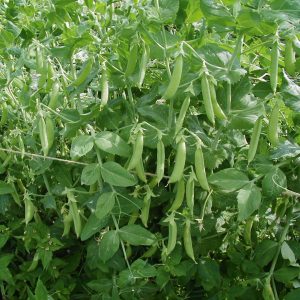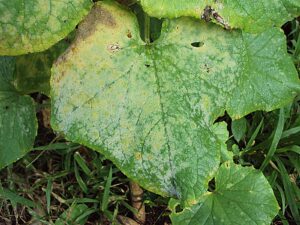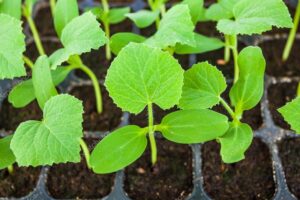Winter is not only a season of rest for the garden, but also an excellent opportunity to grow a variety of vegetables that thrive in cold climates. With proper care, these hardy plants will feed you through the coldest months of the year.
In this guide we will explain which are the main winter vegetables and how you can successfully grow them in your garden.

Why grow vegetables in winter?
Although low temperatures and frost may seem like a hindrance, many winter vegetables are adapted to these conditions and can grow even in cold climates. Growing them not only allows you to get the most out of your garden year-round, but also to enjoy fresh, seasonal food.
Benefits of winter cultivation:
- Reduced competition from pests and diseases: Many pests are inactivated in winter, which reduces the risk of infestations.
- Continuous use of the orchard: Prevents plots from falling into disuse.
- Fresh and healthy food: Perfect for soups, stews and seasonal salads.
Ideal vegetables to grow in winter
1. Swiss chard
Cold-hardy, chard is one of the most versatile winter vegetables. They can be harvested continuously, cutting off the outer leaves while the inner leaves continue to grow.
How to grow them:
- Direct seeding in well-drained soil.
- Moderate irrigation, avoiding waterlogging.
- Protect young plants with mulch in case of hard frosts.
2. Spinach
Spinach is another vegetable that does well in cold climates, offering tender, nutrient-rich leaves.
How to grow them:
- Direct sowing or in seedbed at the beginning of winter.
- It prefers soils rich in organic matter.
- Constant but light watering.
3. Beans and peas
Both legumes are resistant to cold and also enrich the soil with nitrogen, preparing it for future crops.
How to grow them:
- Direct sowing, placing stakes for climbing plants.
- They need well aerated and drained soils.
- They tolerate light frosts without problems.

4. Garlic and onions
Ideal for planting in winter, as they need low temperatures to develop large and healthy bulbs.
How to grow them:
- Direct seeding in shallow furrows.
- Avoid excessively wet soils to prevent rotting.
- They grow slowly, but require little care.
5. Cabbages
From kale to Brussels sprouts, these plants adapt well to cold weather and often improve in flavor after a frost.
How to grow them:
- Sowing in seedbed and transplanting when the plants are developed.
- Well fertilized and slightly acid soil.
- Moderate and constant irrigation.
-
 Kelvedon Wonder Pea Seeds3.88€
Kelvedon Wonder Pea Seeds3.88€ -
 Superaguadulce Bean Seeds4.45€
Superaguadulce Bean Seeds4.45€ -
Product on sale
 Onion Seeds Rossa lunga di FirenzeOriginal price was: 1.95€.1.30€Current price is: 1.30€.
Onion Seeds Rossa lunga di FirenzeOriginal price was: 1.95€.1.30€Current price is: 1.30€. -
Product on sale
 Spinach Seeds Butterflay Biodynamic Spinach Seeds DemeterOriginal price was: 2.10€.1.40€Current price is: 1.40€.
Spinach Seeds Butterflay Biodynamic Spinach Seeds DemeterOriginal price was: 2.10€.1.40€Current price is: 1.40€. -
Product on sale
 Multicolored Chard SeedsOriginal price was: 2.19€.1.40€Current price is: 1.40€.
Multicolored Chard SeedsOriginal price was: 2.19€.1.40€Current price is: 1.40€. -
Product on sale
 Seeds Cola TronchudaOriginal price was: 1.95€.1.30€Current price is: 1.30€.
Seeds Cola TronchudaOriginal price was: 1.95€.1.30€Current price is: 1.30€.
Tips for winter cultivation
- Use mulch: It protects plant roots and conserves soil moisture.
- Cover crops: Use thermal blankets or plastic tunnels to protect sensitive plants.
- Enrich the soil: Before planting, add compost or well-decomposed manure to ensure a good supply of nutrients.
- Water during warm hours: If watering is necessary, water during the warmest hours of the day to prevent the water from freezing.
Soil preparation for winter
Soil care is key to the success of winter crops. Take advantage of this season to improve its quality:
- Tills the soil: Breaks compaction and improves aeration.
- Add organic matter: Compost, worm castings or manure are ideal to enrich the soil.
- Mulch: Protects the soil from erosion and conserves nutrients.
Information note: Bulk fertilizers for professionals and small farmers
If you are an agricultural professional or a small farmer interested in fertilizers and bulk seeds for your crops, please contact us at info@cultivers.es. We will be pleased to advise you and offer you customized solutions.







